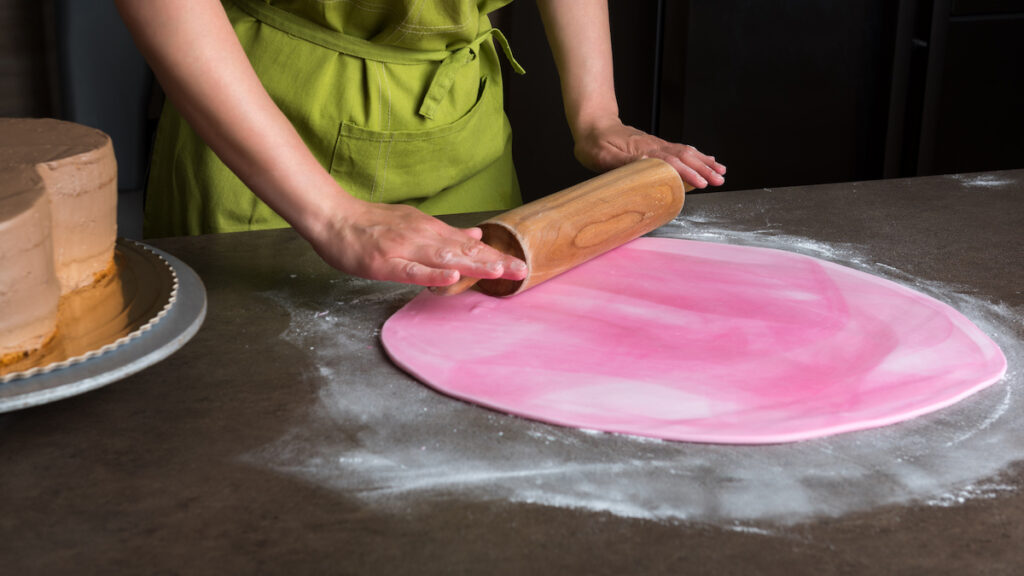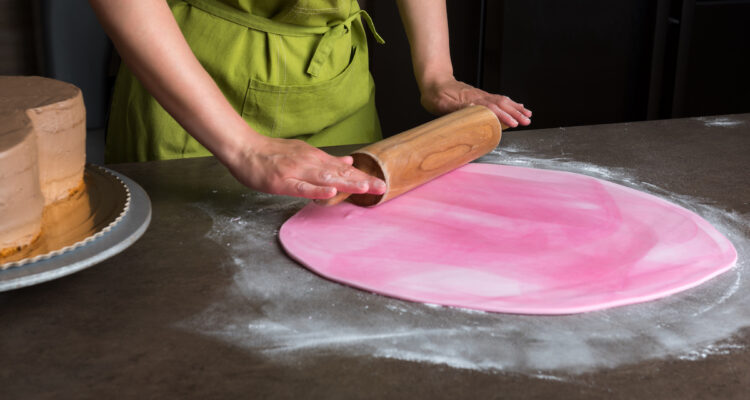
As someone who has been baking for years, I have experimented with many different types of frosting and icing. One of the most versatile and impressive options is fondant. Fondant is a type of icing that can be rolled out and draped over a cake to create a smooth, flawless finish. It’s often used for wedding cakes and other special occasions, but can also be used for cupcakes and other treats.
Fondant has been around for centuries, with its origins dating back to ancient China and India. It was originally made with sugar, water, and other ingredients, and was used as a decoration for pastries and other desserts. Today, fondant is typically made with powdered sugar, gelatin, and other ingredients, and can be flavored and colored to suit any occasion. You can get store-bought fondant for the easiest solution, but sometimes it is just as fun to make your own homemade fondant. While many recipes call for marshmallows, it’s entirely possible to make homemade fondant without them.
To make homemade fondant without marshmallows, you’ll need a few key ingredients, including powdered sugar, gelatin, and vegetable shortening. There are many variations on the recipe, but many involve heating gelatin and light corn syrup together before adding the powdered sugar. However, my favorite recipe doesn’t include corn syrup and is easy to make. You can also add flavorings and food coloring to customize your fondant. With a little practice, you can create a smooth, professional-looking finish on all of your baked goods. Some helpful tips and variations include adding glycerin for a smoother texture, or using different types of sugar for different effects.
What is Fondant?
Fondant is a type of icing that is commonly used to decorate cakes, cupcakes, and other desserts. It is made from a mixture of sugar, water, and sometimes other ingredients like gelatin, corn syrup, or glycerin. Fondant can be rolled out and cut into shapes, molded into three-dimensional figures, or used to cover an entire cake.
The history of fondant can be traced back to the 16th century, when it was used as a decorative element for elaborate banquets and feasts. In those days, fondant was made from sugar and rosewater, and was shaped into intricate designs that were meant to impress guests.
Today, fondant is a popular choice for cake decorators because of its versatility and ability to create a smooth, polished finish. It can be colored, flavored, and shaped into a variety of designs, making it a favorite among professional bakers and home cooks alike. I have made countless cakes with fondant and love to work with it.
One of the most common types of fondant is rolled fondant, which is made by mixing sugar, water, and gelatin together and then rolling it out into a thin sheet. This type of pliable fondant is often used to cover cakes and create a smooth, polished finish.
Another type of fondant is poured fondant, which is made by heating sugar and water together until the sugar dissolves, and then pouring the mixture over a cake or other dessert. Poured fondant is often used to make petits fours, a type of small, bite-sized cake that is coated in a layer of fondant.
Overall, fondant is a versatile and popular choice for cake decorators because of its ability to create a smooth, polished finish and its versatility in creating a variety of designs.
1. Homemade Fondant Recipe without Marshmallow
If you’re looking for a delicious and easy way to decorate your cakes, cupcakes, and other baked treats, homemade fondant is the way to go. Fondant is a versatile icing that can be used to create a smooth, polished finish on cakes, as well as to make intricate decorations and designs. In this section, I’ll share with you my favorite recipe for an easy homemade fondant without marshmallows, as well as some tips and variations to help you customize your fondant to your liking.
Ingredients
To make homemade fondant, you’ll need:
- 1/4 cup water
- 1 tablespoon unflavored gelatin
- 1/2 cup vegetable shortening or unsalted butter, softened
- 1/4 teaspoon salt
- 1 teaspoon vanilla extract
- 2 tablespoons glycerin
- 8 cups powdered sugar
Recipe
- In a small bowl, combine the water and gelatin. Allow the mixture to sit for 5 minutes to bloom.
- In a large mixing bowl, cream together the vegetable shortening, salt, vanilla extract, and glycerin until smooth.
- Add the bloomed gelatin to the mixing bowl and mix until well combined.
- Gradually add the powdered sugar to the mixing bowl, mixing on low speed until the mixture forms a dough.
- Turn the dough out onto a clean, flat surface dusted with powdered sugar.
- Knead the dough for 5—10 minutes until it becomes smooth and pliable.
- Wrap the fondant in plastic wrap and let it rest for at least 30 minutes before using.
Tips and Variations
- If your fondant is too dry, add a little bit of water, glycerin, or light corn syrup to it to make it more pliable.
- If your fondant is too sticky, add a little bit of powdered sugar to it to make it firmer.
- You can add food coloring to your fondant to create different colors.
- You can also add flavorings to your fondant, such as almond extract, lemon juice, or cocoa powder, to give it a unique taste.
- For a chocolate fondant, replace 1 cup of the powdered sugar with 1 cup of cocoa powder.
- If you’re having trouble kneading your fondant, try using a little bit of vegetable shortening or cornstarch on your hands and work surface to prevent sticking.
- Use vegetable shortening instead of butter for pure white fondant.
- Store the fondant in an airtight container at room temperature for up to 2 weeks.
2. Easier Homemade Fondant Recipe
Making fondant from scratch is easier than you might think. Here is even easier recipe for homemade fondant without marshmallow:
- 1 cup powdered sugar
- 1 tablespoon water
- 1 tablespoon vegetable shortening
- 1 teaspoon glycerin
Combine all ingredients in a large mixing bowl and stir until a dough forms. Knead the dough on a clean, lightly floured flat surface until it is smooth and pliable. If the fondant is too dry, add a little more water. If it is too sticky, add a little more powdered sugar.
Using Homemade Fondant
Decorating Cakes
When using fondant icing to decorate cakes, it’s important to start with a smooth, even layer of buttercream frosting. This will help the fondant adhere to the cake and prevent any bumps or lumps from showing through.
To roll out the fondant, sprinkle powdered sugar onto a clean work surface and knead the fondant until it’s soft and pliable. Roll the fondant out to the desired thickness and carefully drape it over the cake, smoothing it down with your hands or a fondant smoother.
Once the fondant is in place, you can add additional decorations, such as edible pearls, sugar flowers, or painted designs. You can use the leftover fondant to make different figures like fondant roses or fondant horseshoes.
You can read more how to make a fondant cake in this post.
Troubleshooting Tips
If you’re having trouble with your fondant, don’t worry — there are a few common issues that can be easily fixed.
- Cracking: If your fondant is cracking or tearing, it may be too dry. Try adding a small amount of water or corn syrup to the fondant and kneading it until it’s smooth again.
- Sticking: If your fondant is sticking to the work surface or rolling pin, dust the surface with powdered sugar or cornstarch.
- Air bubbles: If air bubbles are forming under the fondant, use a sharp pin to gently poke a hole in the fondant and smooth it down with your fingers.
Conclusion
Homemade fondant without marshmallows is a great alternative for those who are looking for a recipe that does not use marshmallows. Fondant is a versatile ingredient that can be used to create intricate designs and decorations, and it has a long history in cake decorating. With this recipe and a few tips and variations, you can create your own homemade fondant and take your cake decorating to the next level.

